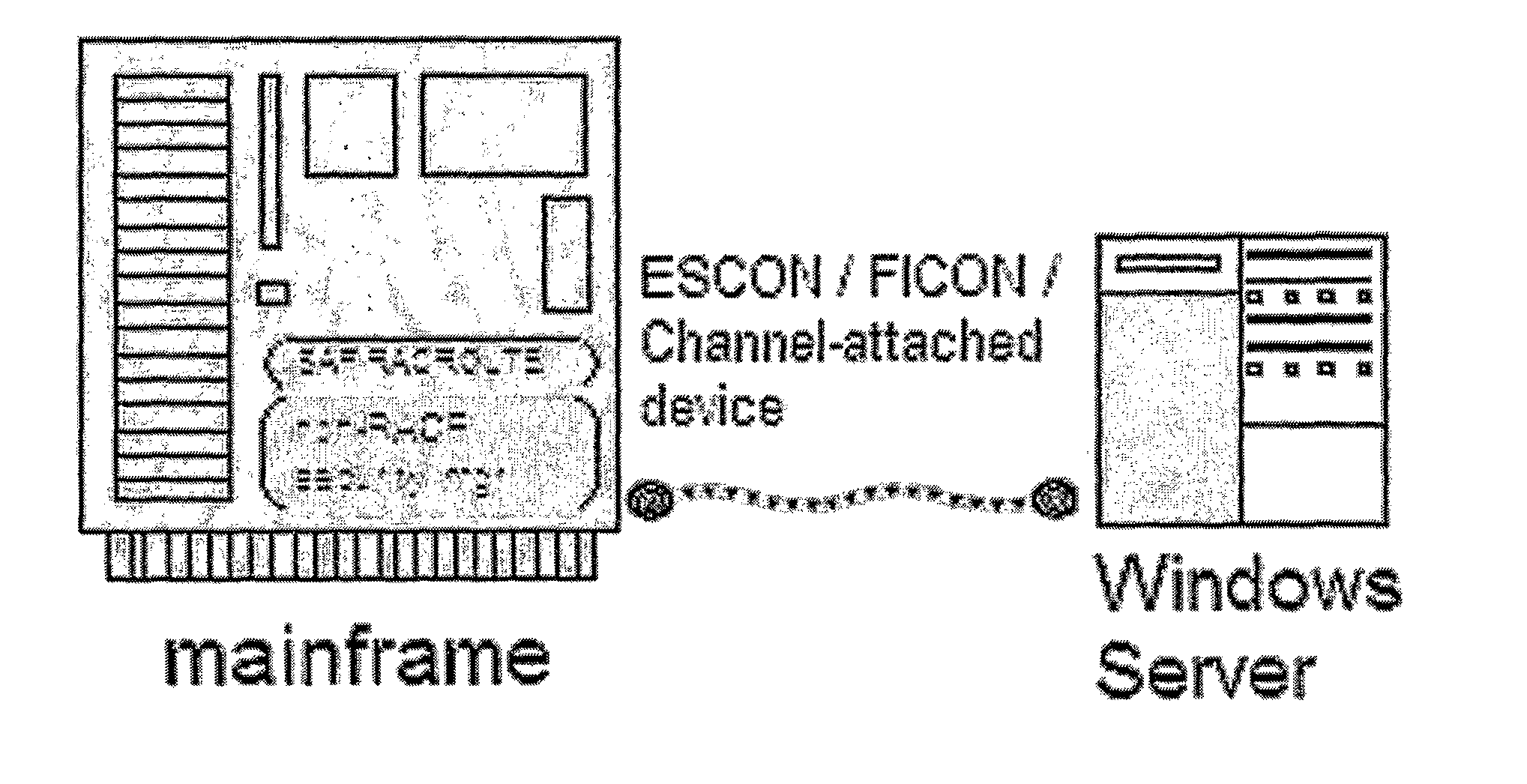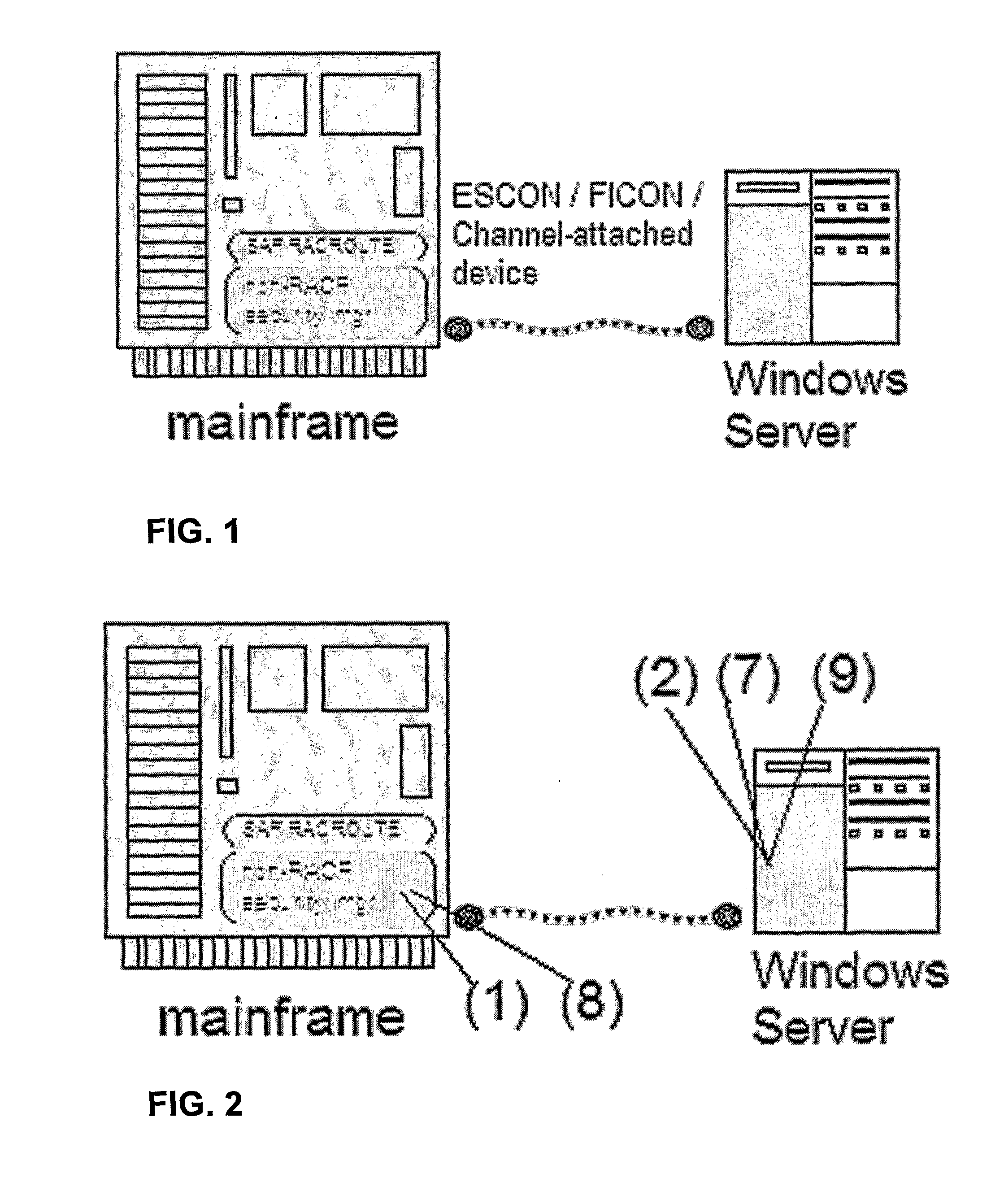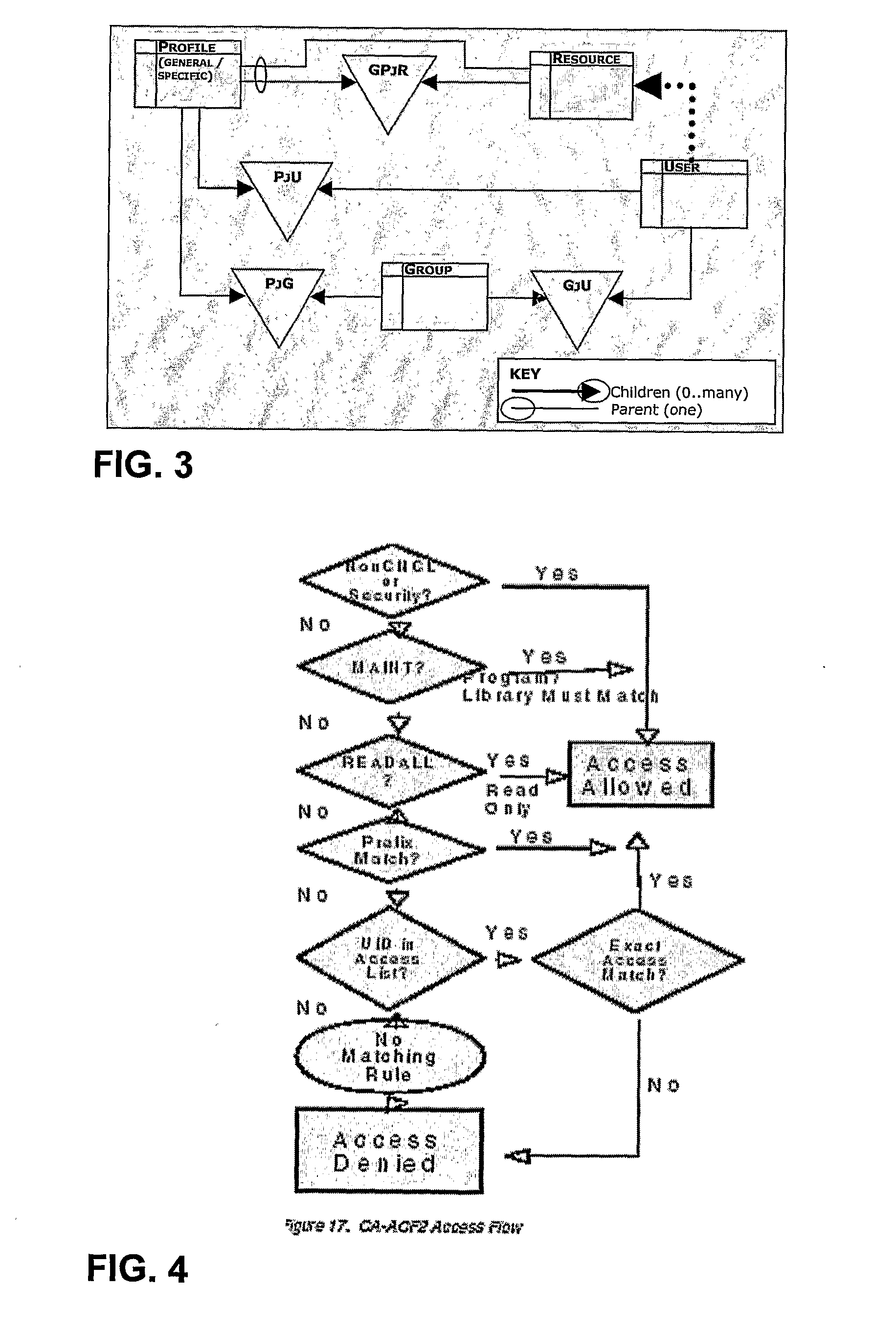Translation Engine for Computer Authorizations Between Active Directory and Mainframe System
a technology of computer authorization and mainframe system, applied in the direction of digital computers, instruments, computing, etc., can solve the problems of inability to define [centralized] interfaces by ddm architecture, inconvenience for users, delays and other latencies inherent in distributed service requests, and achieves improved security flexibility and functionality, and advantageous auditing
- Summary
- Abstract
- Description
- Claims
- Application Information
AI Technical Summary
Benefits of technology
Problems solved by technology
Method used
Image
Examples
Embodiment Construction
Overview
[0085]The high-level diagram of FIG. 2 shows three main existing technology components:[0086]A mainframe computer, an IBM Multiple Virtual System (MVS) or Virtual Machine / Enterprise Systems Architecture (VM / ESA) or compatible system using either IBM's Resource Access Control Facility (RACF) or a “non-RACF external security-manager product” that complies with IBM's guidance for building such a security manager, as described in the RACROUTE Macro Reference cited above.9 9 For the purposes of this disclosure, the technical discussion below will prefer a more generalized usage of “RACF” to mean either IBM's RACF® product or any “non-RACF external security-manager product” that complies with IBM's guidance for building such a security manager, as described in the RACROUTE Macro Reference cited above. When the IBM RACF® product is intended it will be specified as in this sentence.[0087]A mainframe hardware device communication channel using either IBM Bus and Tag, Enterprise Syste...
PUM
 Login to View More
Login to View More Abstract
Description
Claims
Application Information
 Login to View More
Login to View More - R&D
- Intellectual Property
- Life Sciences
- Materials
- Tech Scout
- Unparalleled Data Quality
- Higher Quality Content
- 60% Fewer Hallucinations
Browse by: Latest US Patents, China's latest patents, Technical Efficacy Thesaurus, Application Domain, Technology Topic, Popular Technical Reports.
© 2025 PatSnap. All rights reserved.Legal|Privacy policy|Modern Slavery Act Transparency Statement|Sitemap|About US| Contact US: help@patsnap.com



